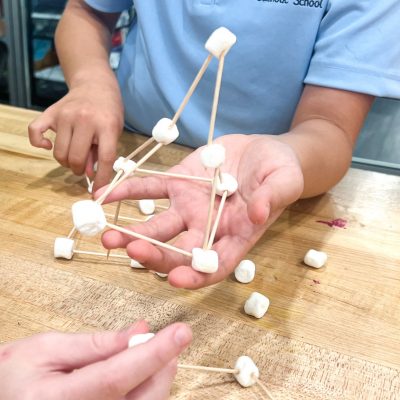STEM education—science, technology, engineering, and mathematics—plays a critical role in preparing students for the future. One of the most effective ways to engage young learners in STEM is by incorporating hands-on activities that stimulate creativity, problem-solving, and teamwork. The engineering design process (EDP) is a structured method that guides students through the stages of problem-solving, allowing them to think like engineers as they tackle real-world challenges.
One such challenge that’s both fun and educational is the Marshmallow Tower Challenge. This simple activity involves using marshmallows and toothpicks to build the tallest free-standing tower possible. It may sound straightforward, but it requires a lot of creativity, planning, and perseverance. Here’s how you can use the engineering design process to turn this challenge into a powerful learning experience.
Step 1: Ask
The first step in the engineering design process is to define the problem. In this case, students are tasked with building the tallest tower they can using only marshmallows and toothpicks. However, it’s important to dive deeper by asking key questions:
- What are the limitations? (e.g., the number of materials, time constraints)
- What do we need to consider in terms of stability and strength?
- How can we ensure our tower stands upright and doesn’t collapse under its own weight?
These questions help students frame the challenge and start thinking critically about potential solutions.
Step 2: Imagine
Next, students move on to the brainstorming phase. Here, they can let their imaginations run wild, thinking of different ways to construct their tower. Encourage them to sketch their ideas, discuss them in groups, and consider the pros and cons of each approach. The goal is to generate a variety of ideas and select the best one to pursue.
Step 3: Plan
After brainstorming, it’s time to create a plan. Students should decide on the final design for their tower, detailing the steps they will take to build it. This phase involves selecting the most promising idea from the brainstorming session and developing a strategy for executing it. Students should consider:
- The base structure (How wide should it be?)
- The height of each level (Will taller sections make the tower unstable?)
- The distribution of weight (Where should the marshmallows be placed to maintain balance?)
Having a clear plan in place is essential for the next step.
Step 4: Create
With their plan in hand, students begin building their marshmallow tower. This is where they bring their ideas to life, working collaboratively to construct their design. During this phase, students will likely encounter unexpected challenges. Some parts of the tower might not be as stable as anticipated, or the structure might lean or collapse. These challenges are valuable learning opportunities, teaching students resilience and adaptability.
Step 5: Improve
Once the initial tower is built, students evaluate its performance. Did it meet the height requirement? Is it stable? If the tower didn’t perform as expected, this is the perfect time for students to reflect on what went wrong and think of ways to improve their design. This might involve reinforcing the base, redistributing the marshmallows, or trying a completely new approach. The improvement phase is crucial because it emphasizes that failure is not the end but a step toward success.
Why the Marshmallow Tower Challenge Matters
The Marshmallow Tower Challenge is more than just a fun activity. It encapsulates the essence of STEM education by fostering critical thinking, creativity, teamwork, and perseverance. By guiding students through the engineering design process, this challenge teaches them how to approach problems methodically, evaluate their solutions, and refine their work—skills that are essential in any STEM field.

Ready to Bring this Marshmallow Tower Challenge to your Classroom?
Our Marshmallow STEM Challenge Bundle is the perfect resource to get you started. It includes a comprehensive teacher lesson plan, engaging teaching slides, and a student packet that walks your learners through every step of the engineering design process. With these tools, you’ll be able to facilitate a dynamic learning experience that your students won’t forget.
Don’t miss out on the opportunity to inspire the next generation of engineers and innovators. Purchase the Marshmallow STEM Challenge Bundle today and take your STEM lessons to the next level!


